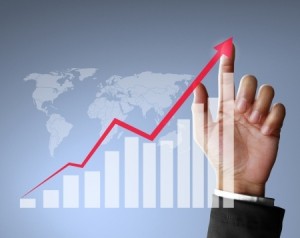
US-based think tank IHS said the domestic economy, which was one of the best-performing in the world last year, had what it would take to grow to more than triple its size in the next decade and half. From a “pussycat” today, the Philippines could become a major Asian “tiger” by 2030.
“The Philippines’ economy has the capacity for robust long-term economic growth of around 4.5 per cent to 5 per cent per year over the 2016 to 2030 time horizon,” IHS said in a statement on Monday.
The bullish projection comes ahead of the World Economic Forum on East Asia to be held in Manila this week. IHS representatives will attend the forum as delegates.
If reforms in the areas of “ease of doing business” and fiscal consolidation are sustained, the country’s economy as measured by gross domestic product (GDP) could grow from its current size of $280 billion to $680 billion by 2024. By 2030, the economy could be worth $1.2 trillion.
Last year, the Philippine economy grew by 7.2 percent—the fastest expansion of any major Southeast Asian economy. By 2016, the Aquino administration is targeting a growth rate of as much as 8.5 percent.
Current growth drivers of the Philippines are the outsourcing industry and the strong and stable remittances of the overseas Filipino workers (OFW).
In the long-term, IHS said the country would be heavily dependent on the ability to make the manufacturing sector more competitive and to mobilize both foreign and domestic investment flows into the manufacturing sector.
“This will require considerable improvement of the business climate, with the Philippines still ranked very low globally on the World Bank’s Ease of Doing Business rankings,” IHS said.
While the Philippines has posted significant gains in improving the various ease-of-doing-business and competitiveness rankings since the start of President Aquino’s term, the country still trails more than half of the world.
In the World Bank’s latest annual Ease of Doing Business report, where the Philippines jumped 30 spots last year alone, the country still ranked 100th out of 189 nations covered. In the region, the country ranked 6th out of 10.
“Sustained rapid growth will require continued economic reforms to improve the business climate of the Philippines, making it more attractive for foreign direct investment into sectors such as manufacturing and tourism,” IHS said.
RELATED STORIES
PH economy to stand out in Asean this year
Philippines is top emerging economy—French firm